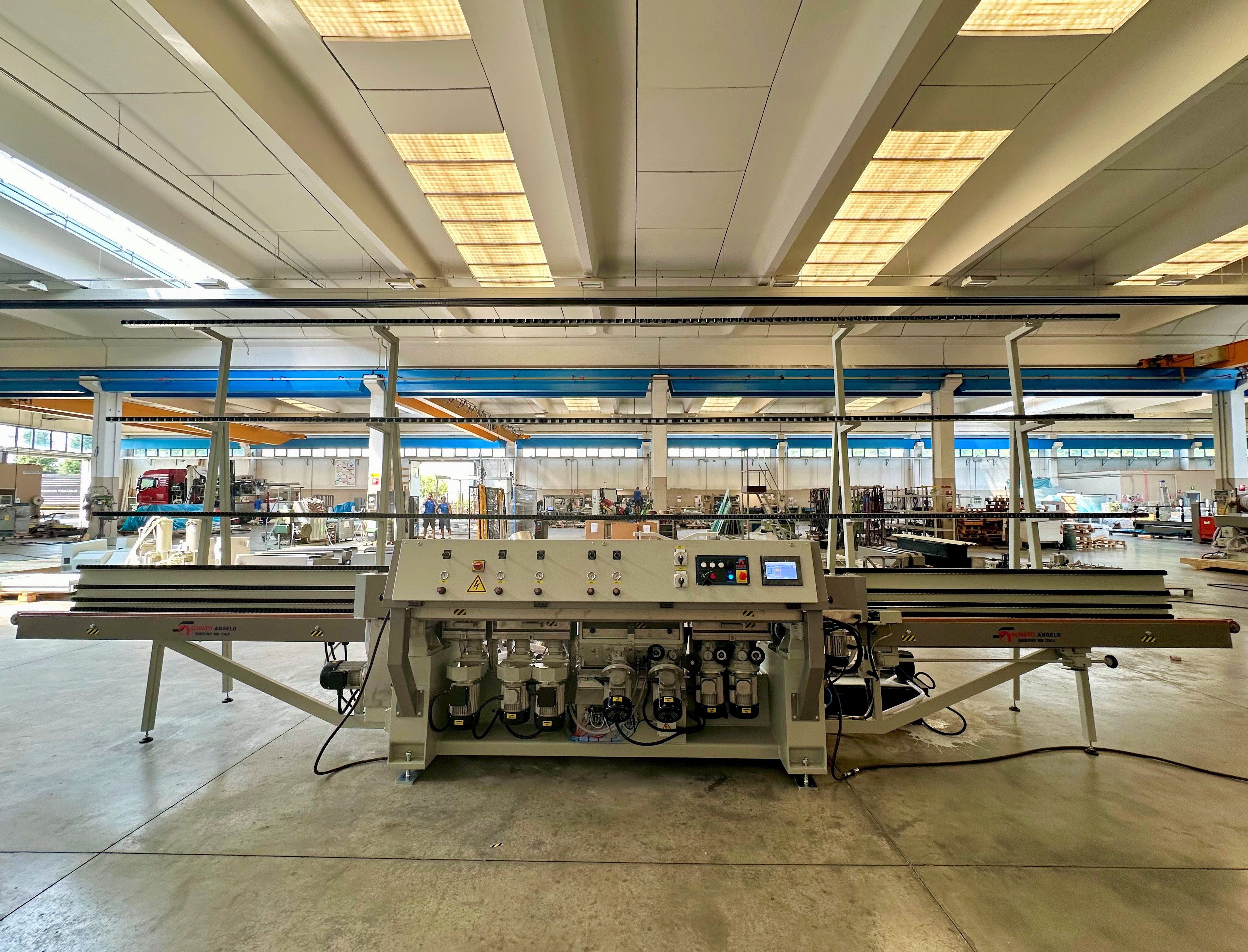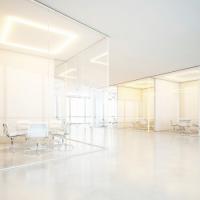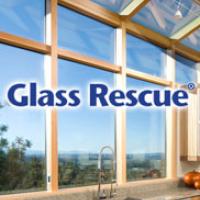Date: 24 March 2015
The $64-million expansion, fully funded by Corning Incorporated, features a 100,000-square-foot addition, which includes a 26,000-square-foot gallery space and a 500-seat live glass demonstration facility. The new wing provides an unprecedented opportunity for visitors to see the breadth and depth of creativity by artists who have pushed the boundaries of glass as an artistic material during the past 25 years..jpg)
Designed by Thomas Phifer and Partners, the new wing provides visitors with an inspiring, day-lit environment in which to experience contemporary art and design in glass. The wing’s inaugural installations feature 117 works from the Museum’s permanent collection. More than 30 of these works have never before been on public display..jpg)
“The opening of the Contemporary Art + Design Wing marks an important milestone in the Museum’s history,” said Karol Wight, president and executive director of The Corning Museum of Glass. “The premier institution dedicated to glass, we are now the leader in the display and interpretation of contemporary art and design in glass. We look forward to welcoming our visitors from all over the world and introducing them to this incredible new chapter in the history of glass, which is told throughout the rest of our campus.”.jpg)
Contemporary Art + Design Galleries
The new, 26,000-square-foot gallery building is devoted to contemporary art and design in glass from 1990 until the present. The building’s five galleries of varying sizes contain diverse works, which are thematically curated, and the display also extends into the porch—a space that wraps around the entirety of the galleries. Works on view include many never-before-seen pieces from the Museum’s permanent collection, including large-scale sculptures, installations, glass “paintings,” and vessels. Artists who are well-known for their work in glass are on display, such as Dale Chihuly, Roni Horn, Karen LaMonte, Josiah McElheny, Beth Lipman, Liza Lou, and Klaus Moje, as are artists less known for their work in glass like Robert Rauschenberg, Tony Cragg, and Kiki Smith. A gallery entirely devoted to design in glass from the past 25 years features works by internationally recognized artists and designers James Carpenter, Christophe Côme, Dan Dailey, Studio Job, Tejo Remy, and Stephen Burks. .jpg)
“With the opening of the new wing, we are able to display and interpret contemporary art and design in glass in the same elegant and thoughtful way in which it is being produced,” said Tina Oldknow, senior curator of modern and contemporary glass. “Today’s artists are using glass in previously unimagined ways. They are innovators of new approaches, concepts, and techniques that push the known boundaries of the material—perhaps, most noticeably, of scale. These large sculptures and installations demanded a monumental space in which to be experienced.”
One of the new galleries is solely dedicated to large-scale installations or special temporary projects. The inaugural installation is one of the Museum’s most recent acquisitions, Constellation (1996), by Kiki Smith. The room-sized work, a meditation on the infinity of space and the desire to understand it, features 26 hot-sculpted glass animals of various sizes, representing different star patterns, designed by Smith and produced by the Venetian maestro Pino Signoretto. The animals cavort amidst cast glass stars and cast bronze scat on a night sky made of handmade indigo-dyed Nepal paper. .jpg)
All of the large-scale sculptures and installations are surrounded by specialty glass barriers made of Corning® Gorilla® Glass. Engineered and fabricated by Corning for display decks designed by Thomas Phifer and Partners and fabricated by Kubik Maltbie, this is the first time the damage-resistant, thin, and optically pure glass—found in 2.7 billion cellphones, tablets, notebooks, and other devices—is being used for this purpose.
Building Design
Designed by Thomas Phifer and Partners, the façade of the new contemporary gallery building is constructed of large white glass panels that create a nearly seamless, softly reflective expanse. Inside, the building features a simple, white interior. The galleries are defined by massive, curvilinear concrete walls, which actually serve as the supports for the skylight roof. The porch, the area outside the galleries along the perimeter of the building, provides additional display space, and a 140-foot-long window provides views out onto the new one-acre Museum Green.
A sophisticated system of roof skylights and overhead lighting provide the optimal lighting conditions for works in glass. Four-foot tall by three-a-half-inch thick concrete beams rest on the curved gallery walls and diffuse the light as it comes through the skylights, directing the light to the floor where the glass is displayed. Electric track lighting is programmed to complement and spotlight the art by adjusting to changes in exterior natural light levels..jpg)
Amphitheater Hot Shop and Live Glass Demonstrations
The Contemporary Art + Design Wing also features a new, 500-seat Amphitheater Hot Shop dedicated to live glassblowing demonstrations. It is a state-of-the-art space with state-of-the-art equipment. Set inside the renovated Steuben Glass factory building, the new hot shop features a balcony running around the perimeter of the shop, offering visitors a 360-degree view of the glassmaking demonstrations.
The space will allow the Museum to add to its popular Hot Glass Demos, narrated demonstrations illustrating the basic properties of glass and principles of glassblowing. With the opening, the Museum is launching a series of demonstrations connecting glassmaking techniques to objects in the collection, as well as guest artist and GlassLab design sessions featuring artists and designers of all backgrounds working with glass.
The first two artists to work in the new Amphitheater Hot Shop will be American sculptor Albert Paley, who will collaborate with Museum glassmakers as part of his Specialty Glass Residency on April 15, 17, and 18; and Swedish artist and designer Bertil Vallien, who will demonstrate his signature sandcasting technique on April 21.
“This new space creates remarkable opportunities for artists and designers to explore the power and potential of glass at The Corning Museum of Glass,” said Robert Cassetti, senior director of creative services and marketing. “This is especially fitting in this historic space where master glassmakers, artists, and designers worked side-by-side for almost 60 years.”
GlassApp
The Museum has created an accessible new web app, GlassApp, for gallery interpretation, debuting in the Contemporary Art + Design Wing. The app provides a way to explore the 117 objects on display through images, artist bios, and “Current Conversations in Glass,” short videos that share behind-the-scenes insights beyond the traditional label text. Featuring members of the Museum’s staff, the videos are conversations about the works, highlighting facts about the artists or their work. Some videos reveal the intricacies of lighting and installing the objects, while others feature glassmakers talking about the techniques used to create them. A “Today at CMoG” section gives real-time updates about what is happening at the Museum, including information about special exhibitions, tour and demo times, and the café menu.
GlassApp is supported by Corning Incorporated’s ONETM Wireless Platform, the first all-optical converged cellular and Wi-Fi solution, which offers virtually unlimited bandwidth to thousands of devices at once. The Corning Museum of Glass is the first museum to offer this service, allowing its hundreds of thousands of visitors each year to enjoy fast, uninterrupted service. Visitors are also encouraged to use their personal devices to share their experience through social media, and their posts are shared with other visitors on screens in the perimeter of the galleries. Benches with iPads connected to GlassApp will be available for visitors who do not have personal web-enabled devices and would like to access additional information about the works on view.
About Thomas Phifer
Thomas Phifer approaches modernism from a humanistic standpoint, connecting the built environment to the natural world with a heightened sense of openness and community spirit that is based on a collaborative, interdisciplinary process. Since founding Thomas Phifer and Partners in 1997, he has completed the North Carolina Museum of Art in Raleigh, North Carolina; the Raymond and Susan Brochstein Pavilion at Rice University in Houston, Texas; and the Salt Point House, the Millbrook House, and the Taghkanic House, all in the Hudson River Valley of New York State.
Work under construction includes the United States Federal Courthouse in Salt Lake City, Utah and the prototype of a new street light fixture for New York City. The firm is also designing a museum for the Glenstone Foundation in Potomac, Maryland; a Velodrome for New York City; and houses in Madison, Wisconsin and Dallas, Texas.
Phifer’s buildings have been repeatedly honored by the American Institute of Architects, including six AIA National Honor Awards and 21 AIA New York Honor Awards. In 2011 the North Carolina Museum of Art won a National Honor Award from the AIA and in 2010 the Raymond and Susan Brochstein Pavilion also won a National Honor Award. The international competition-winning design for the City Lights light fixture for New York City won a Research and Development Award from ARCHITECT Magazine in 2009, and in 2008 the Salt Point House won an American Architecture Award from the Chicago Athenaeum. His projects have been published and exhibited extensively in the United States and overseas.
In 2004 Phifer was awarded the Medal of Honor, the highest award given to an individual or firm, from the New York Chapter of the AIA. In 1995 he received the prestigious Rome Prize from the American Academy in Rome, and in 2011 he was elected an Academician of the National Academy of Design. He is a Fellow of the American Institute of Architects and is serving as a Peer for the General Services Administration. He received his Bachelor of Architecture in 1975 and his Master of Architecture in 1977, both from Clemson University.
About The Corning Museum of Glass Campus
The campus of The Corning Museum of Glass is a collection of modern glass architecture influenced by three generations of architects, each of whom designed with the goal of creating fluid spaces that incorporated glass wherever possible. In 1951, the original Corning Museum of Glass opened its doors. Wallace K. Harrison, of the architectural firm Harrison & Abramowitz, designed an L-shaped, International Style glass building. The design represented the architectural philosophy of the day, creating a light-filled space for displaying objects with similar properties. In 1976, Latvian-American architect Gunnar Birkerts explored a biomorphic—or more organic—modernist style. Birkerts described his building as both free-flowing and amorphous, similar to when glass is heated at the furnace, and crystalline and structured, as when glass is cooled. The structure curved around the original Harrison building, linking to it with light-filled, windowed ramps. In 2001, Smith-Miller + Hawkinson added another addition. Its monumental frameless glass plates are supported by a complex steel structure that allow light to pour in the building and reflect off of angled glass panes. This area was designed to showcase the unique properties of glass as a material for architecture. The strength and functionality of glass is also highlighted by the inclusion, throughout the building, of glass stairs, freestanding glass walls, and glass walkways, which demonstrate the material’s versatility.
About The Corning Museum of Glass
The Corning Museum of Glass is home to the world’s most important collection of glass, including the finest examples of glassmaking spanning 3,500 years. Live glassblowing demonstrations (offered at the Museum, on the road, and at sea on Celebrity Cruises) bring the material to life. Daily Make Your Own Glass experiences at the Museum enable visitors to create work in a state-of-the-art glassmaking studio. The campus in Corning includes a year-round glassmaking school, The Studio, and the Rakow Research Library, the world’s preeminent collection of materials on the art and history of glass. Located in the heart of the Finger Lakes Wine Country of New York State, the Museum is open daily, year-round. Kids and teens, 17 and under, receive free admission. www.cmog.org.
The Museum is currently adding a new wing, designed by Thomas Phifer, which will open March 20, 2015. The 100,000-square-foot Contemporary Art + Design Wing will include a new 26,000-square-foot contemporary art gallery building, as well as one of the world’s largest facilities for glassblowing demonstrations and live glass design sessions.














Add new comment